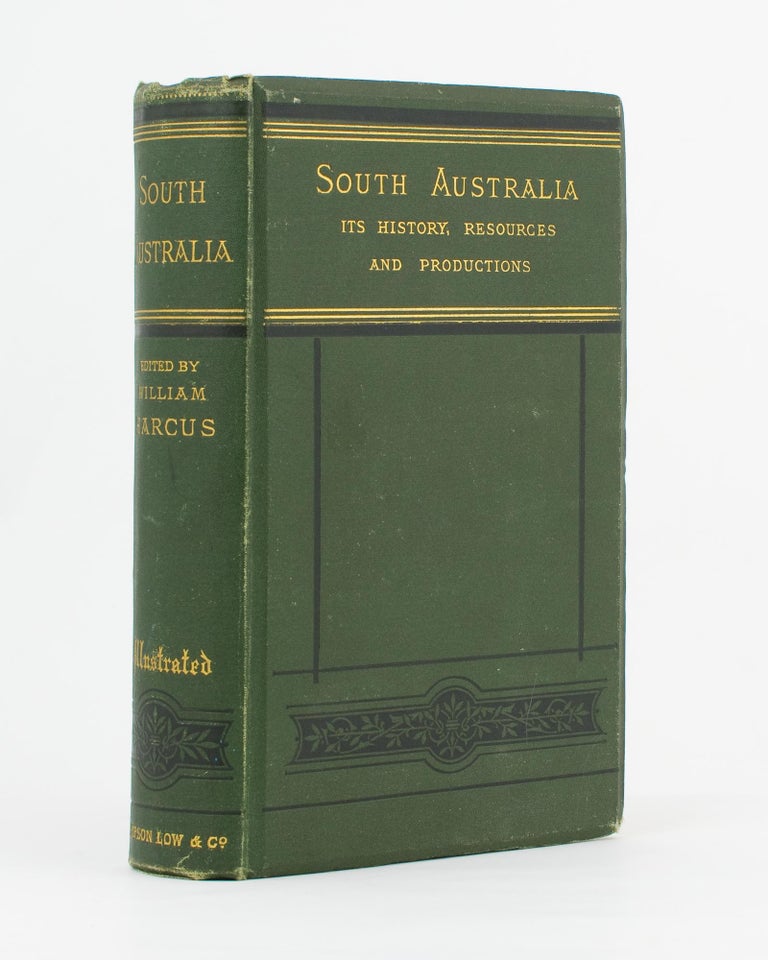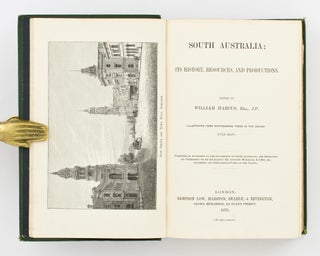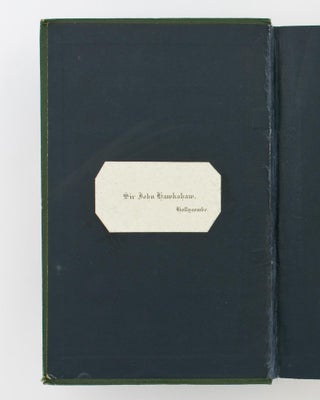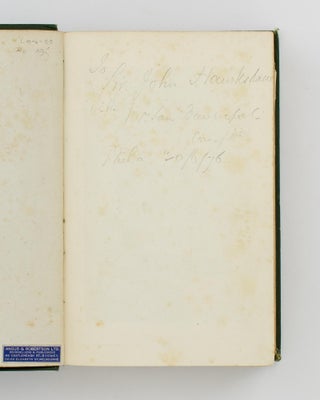South Australia. Its History, Resources, and Productions
London, Sampson Low, Marston, Searle, & Rivington, 1876.
Octavo, xvi, 432 pages plus 66 engraved plates, a folding table, a folding full-colour map of Australia (320 × 400 mm), and a large folding map of South Australia (795 × 545 mm, with minimal colour) in an endpocket.
Dark green cloth lettered in gilt and decorated in black; cloth a little rubbed and scuffed, with minor wear to the corners; edges, inner surfaces of the flyleaves and the first and last pages a little foxed; the folding maps have slight wear to intersecting folds, with old repairs with small pieces of now-discoloured tape to the blank verso of a few of them; repairs to two tears to the open edge of the endpocket; notwithstanding, a very good copy.
Provenance: Sir John Hawkshaw, Hollycombe, with his name-plate on the front pastedown, and a pencilled inscription on the first blank page ('To Sir John Hawkshaw with Mr Sam Davenport's complts. Phila 30/6/76'). Sir John Hawkshaw (1811-1891) was a famous British civil engineer. 'In London he was responsible for the Charing Cross and Cannon Street railways, together with the two bridges which carried them over the Thames; he was engineer of the East London railway, which passes under the Thames through Sir Marc Brunel's well-known tunnel; and jointly with Sir John Wolfe Barry he constructed the section of the Underground railway which completed the inner circle between the Aldgate and Mansion House stations. In addition, many railway works claimed his attention in all parts of the world - Germany, Russia, India, Mauritius, etc. One noteworthy point in his railway practice was his advocacy, in opposition to Robert Stephenson, of steeper gradients than had previously been thought desirable or possible, and so far back as 1838 he expressed decided disapproval of the maintenance of the broad gauge on the Great Western, because of the troubles he foresaw it would lead to in connection with future railway extension, and because he objected in general to breaks of gauge in the lines of a country. The construction of canals was another branch of engineering in which he was actively engaged. In 1862 he became engineer of the Amsterdam ship-canal, and in the succeeding year he may fairly be said to have been the saviour of the Suez Canal. About that time the scheme was in very bad odour, and the Khedive determined to get the opinion of an English engineer as to its practicability, having made up his mind to stop the works if that opinion was unfavourable. Hawkshaw was chosen to make the inquiry, and it was because his report was entirely favourable that Ferdinand de Lesseps was able to say at the opening ceremony that to him he owed the canal' (Grace's Guide to British Industrial History, online). Sir Samuel Davenport (1818-1906, knighted in 1884) was no slouch either; the South Australian pioneer was a prominent land owner and parliamentarian, interested 'in technological developments ... [and] was an ardent promoter of agriculture and new industries ... In 1851 he represented the colony as executive commissioner at the Great Exhibition in London, and at exhibitions in Philadelphia in 1876 [where he presumably crossed paths with Hawkshaw], Sydney in 1879 and Melbourne in 1880, at the Colonial and Indian Exhibition in 1886 and the International Exhibition at Melbourne in 1888' ('Australian Dictionary of Biography').
Item #109433
Sold




